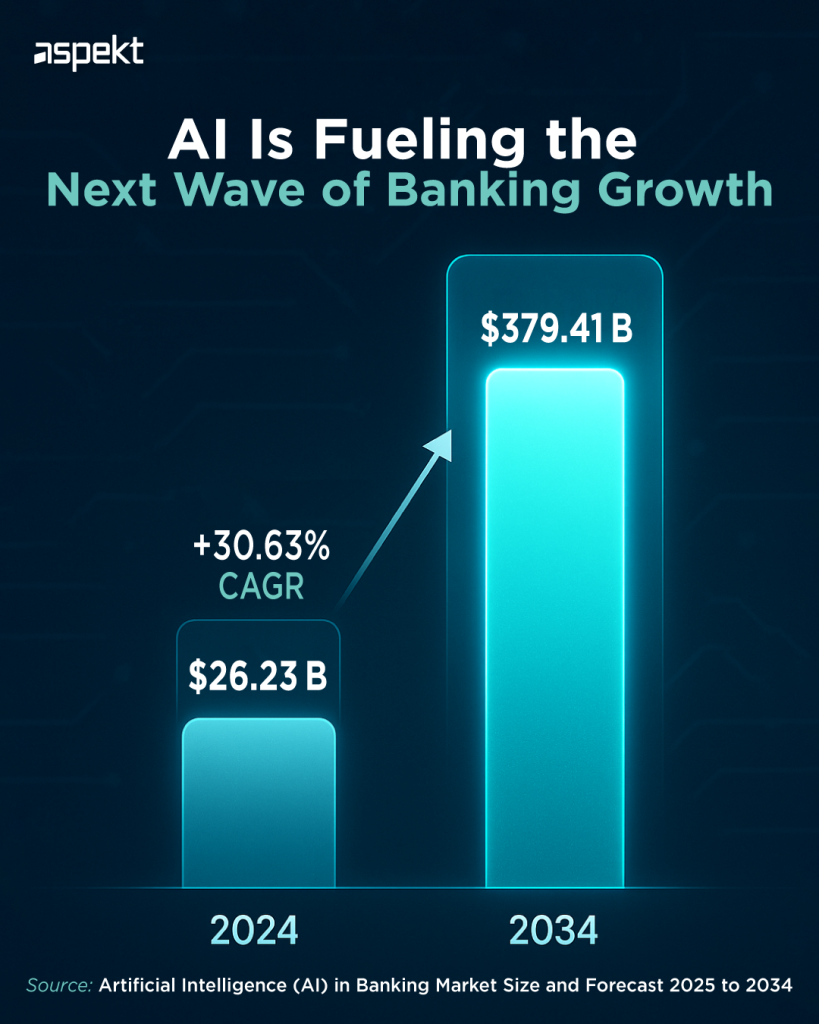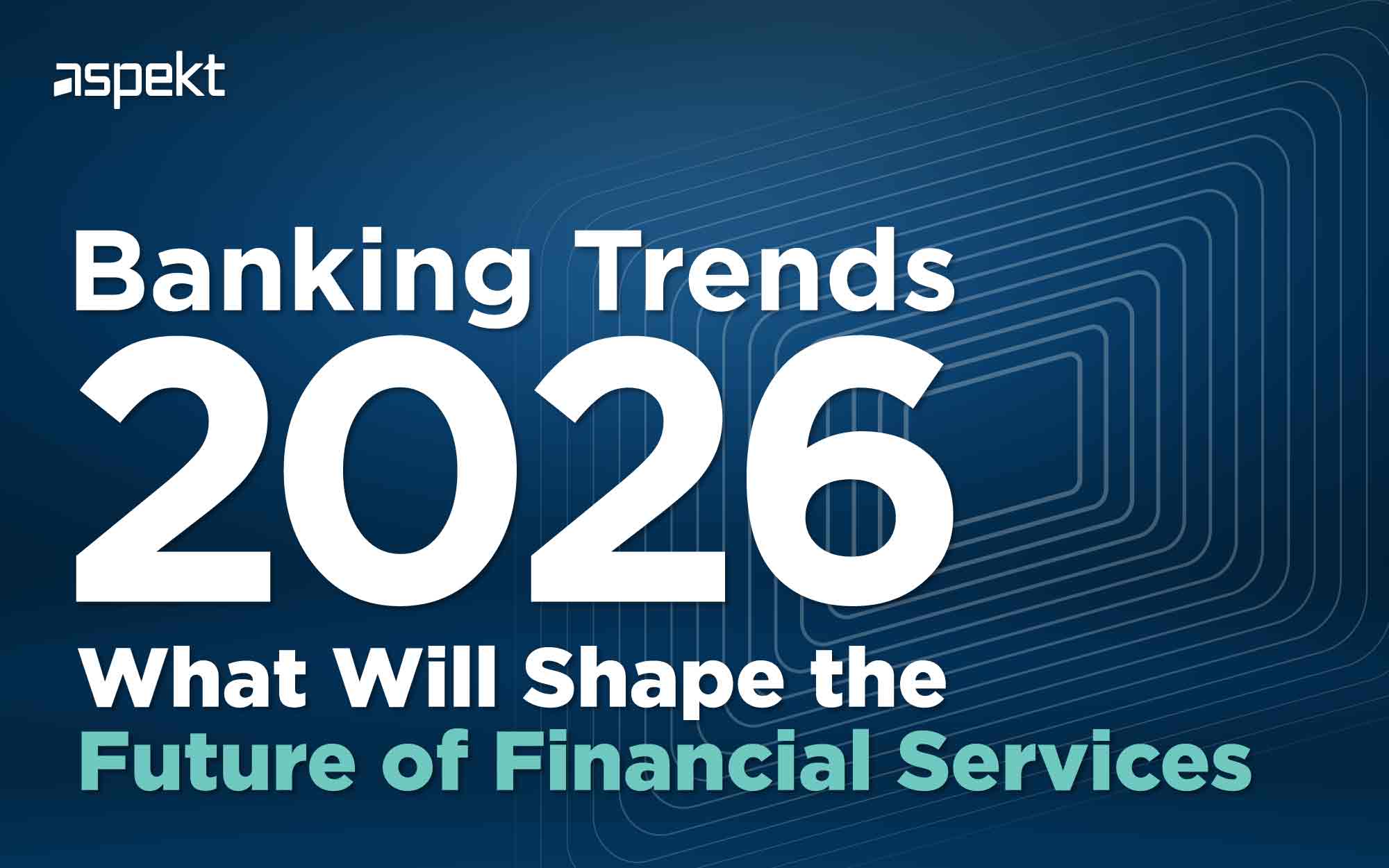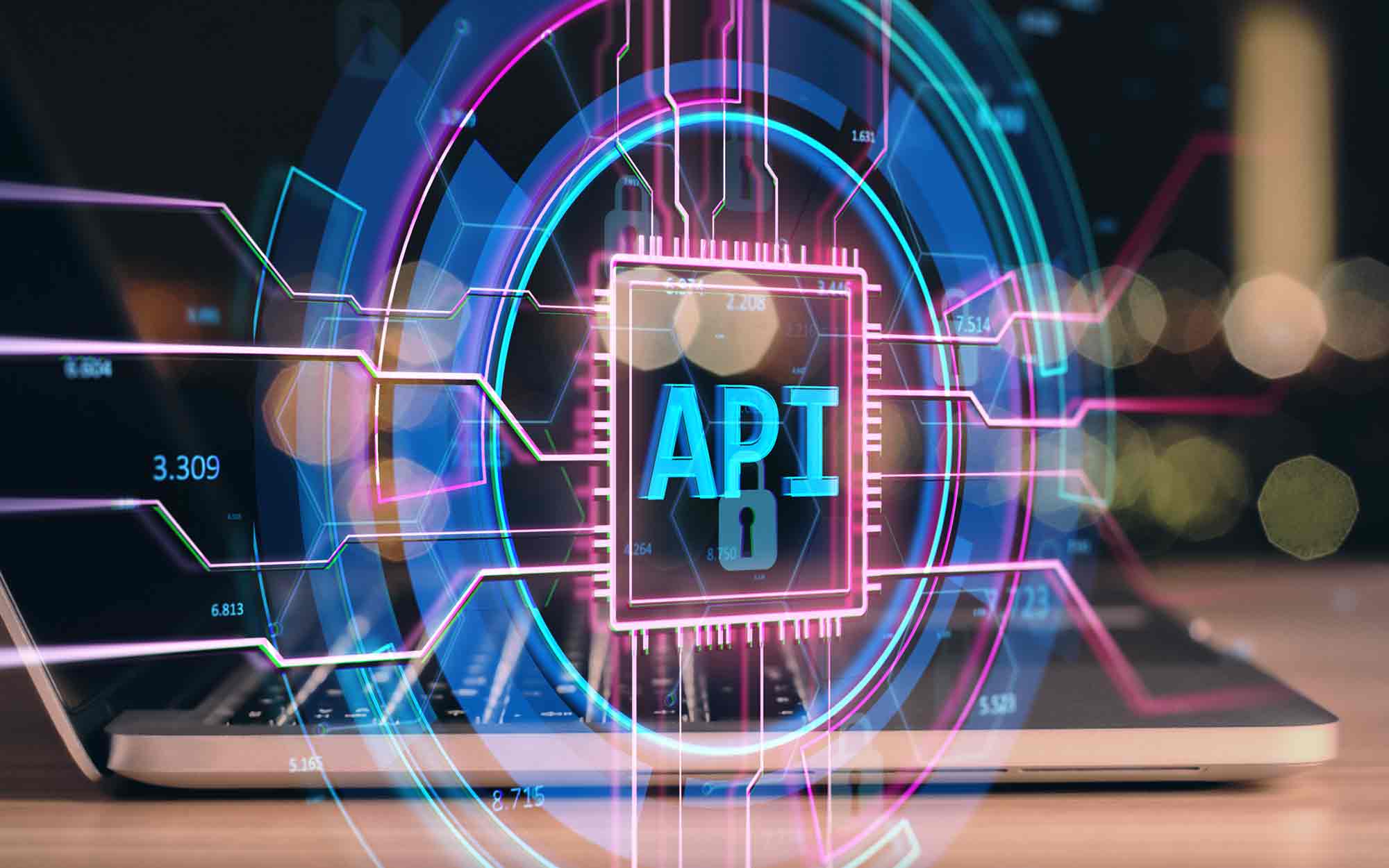A decade ago, the idea of a virtual assistant managing customer queries, or a system that could flag suspicious transactions before they even occurred, might have sounded like science fiction. Today, it’s becoming standard practice, and the financial institutions embracing this shift are seeing the benefits first.
Artificial Intelligence (AI) is not just a technological catchphrase anymore. It’s becoming an essential part of banking strategy, transforming how institutions operate, mitigate risk, and engage with clients.
AI in Banking: Growth You Can’t Ignore
According to Precedence Research, the global AI in banking market was valued at USD 26.23 billion in 2024. It is projected to grow to an astonishing USD 379.41 billion by 2034, expanding at a compound annual growth rate (CAGR) of 30.63% from 2025 onward. This growth is being fueled by digitization, modernization, and an urgent need for smarter, more responsive systems within the financial sector.
This isn’t just growth. It’s a global transformation in motion, driven by solutions that are smarter, faster, and more aligned with the expectations of today’s banking customers.

Where AI in Banking Is Delivering Real Impact
Risk management is one of the strongest use cases. In 2024, this segment held the largest share of the market. AI models analyze vast amounts of historical and real-time data to detect fraud, identify anomalies, and predict default risk more accurately than traditional methods ever could.
At the same time, customer service is becoming more personalized and more responsive, thanks to AI-powered chatbots and virtual assistants. These tools not only cut operational costs but also offer customers 24/7 access to services, improving satisfaction and retention.
Want to see how this works in real life? Take a look at how Aspekt partnered with FinFun to bring AI-powered chatbots into the hands of customers. With this solution, people can check their accounts, apply for loans, and get personalized financial advice—all through their favorite messaging apps. It’s fast, friendly, and built for real needs. The chatbot doesn’t just answer questions; it builds trust, drives sales, and makes banking more accessible. See how this partnership is changing the game.
Natural language processing (NLP)—the technology that helps machines understand and generate human language—held the largest technology share in 2024. Banks use NLP for sentiment analysis, fraud detection, investment analysis, and even to enhance customer service by analyzing conversations across digital channels.
And computer vision, while still emerging, is growing quickly. It’s being used for video analytics, facial recognition at ATMs, and even for branch security and compliance monitoring.
A Real-World Example: Using AI in Banking to Predict Loan Defaults
A clear example of how machine learning is already making a difference comes from a project with AFK, the Agency for Finance in Kosovo. As one of the largest microfinance institutions in the country, AFK was looking for a way to better understand borrower behavior and reduce the risk of loan defaults.
Aspekt worked closely with the AFK team to build a predictive model that could turn complex data into real-time insights. The process started with a deep dive into the data—exploring repayment trends, customer characteristics, product types, and branch performance.
Using techniques like Exploratory Data Analysis and supervised learning, our team developed a model based on the Random Forest algorithm. This allowed our client to anticipate potential delinquency before it occurred and act proactively. Today, the system is fully embedded in their core operations, helping staff make faster, more confident decisions while improving portfolio quality. It’s a reminder that the right use of data doesn’t just inform—it transforms.
It’s Not Just for the Biggest Players
Historically, AI adoption has been led by large enterprises due to their resources and capacity to invest. But the report also highlights that small and medium-sized financial institutions are expected to register significant growth in AI adoption over the next decade. This is largely due to the rising availability of cost-effective AI tools and the growing pressure to meet customer expectations with leaner teams and tighter budgets.
AI is no longer about “innovation for innovation’s sake”; it’s about staying relevant, efficient, and secure.

The Challenges That Come With Change
Of course, every transformation brings complexity. The same report notes that rising cybercrime, bias in AI models, and high implementation costs remain critical challenges. Institutions must also navigate ethical and regulatory concerns to ensure AI tools are trustworthy, explainable, and aligned with compliance standards.
But even with these risks, the opportunity far outweighs the hesitation. AI allows financial institutions to automate intelligently, act proactively, and deliver services with greater speed and precision.
AI in Banking Is Here: Is Your Institution Ready?
To make AI truly effective, the foundation matters. That’s where modular and process-driven core banking systems come in. They enable institutions to integrate AI at their own pace, without disrupting critical operations.
Core systems that support on-premise deployment, full control of data, and seamless configurability are essential to making the most of AI—especially in environments where data protection, compliance, and adaptability are non-negotiable.
Artificial intelligence is not the future of banking. It’s already here and growing rapidly. For financial institutions, the next step is not to adopt AI blindly, but to invest in the right infrastructure to support it.
Because success with AI isn’t just about algorithms. It’s about having the foundation to turn intelligence into impact.
Want to see how AI in banking fits into your strategy?
Contact our team at sales@aspekt.mk for a personalized conversation.














